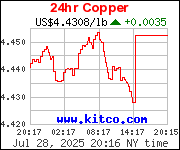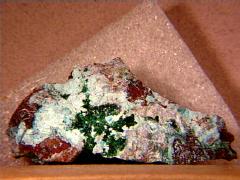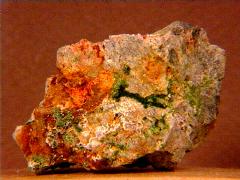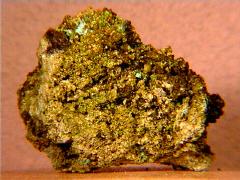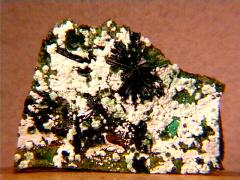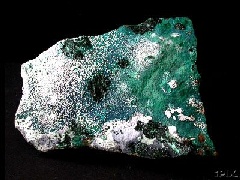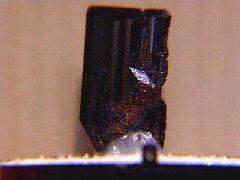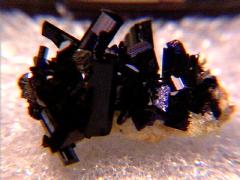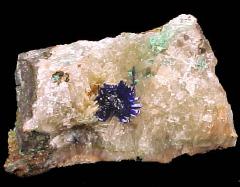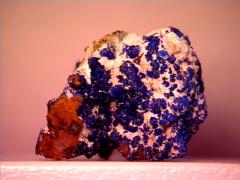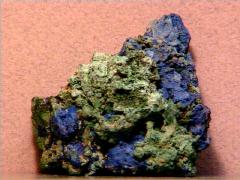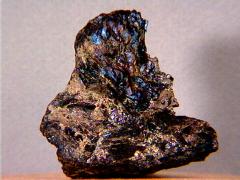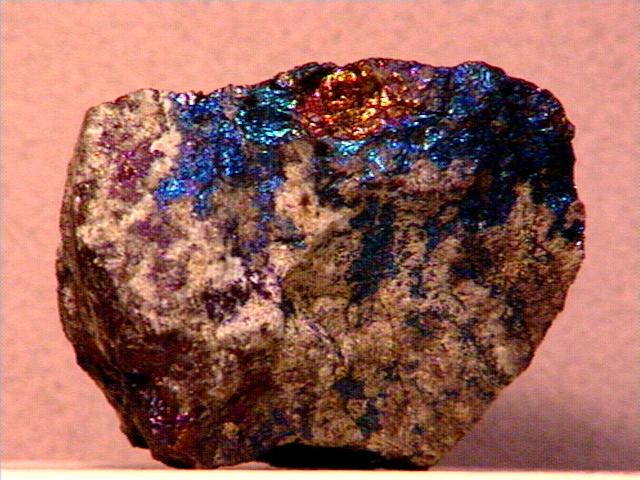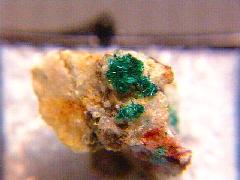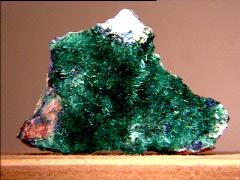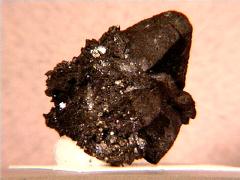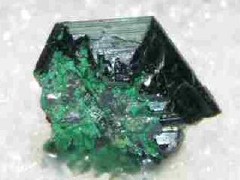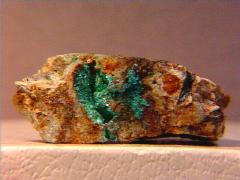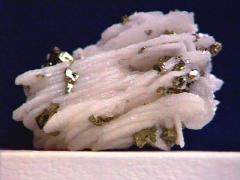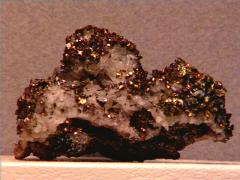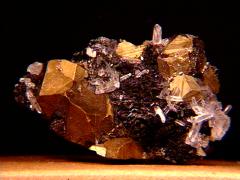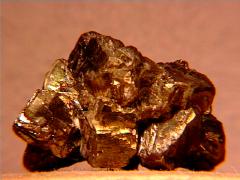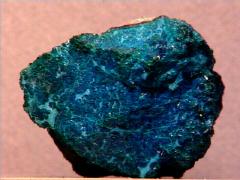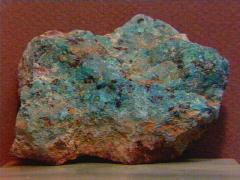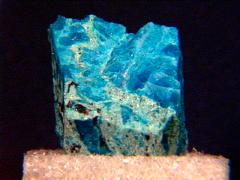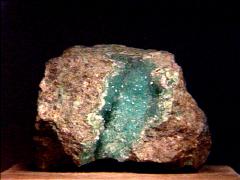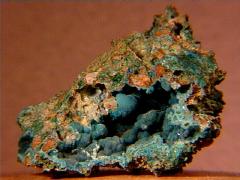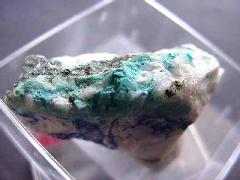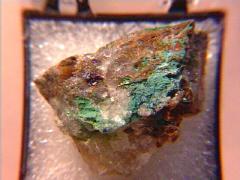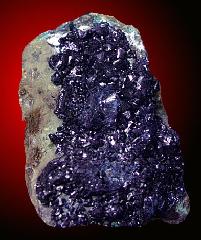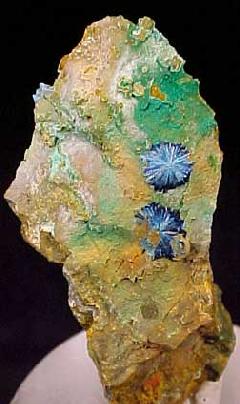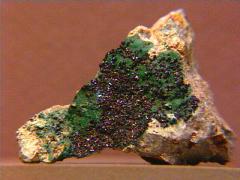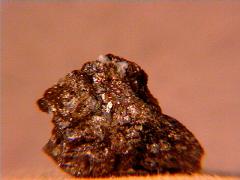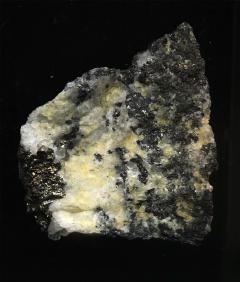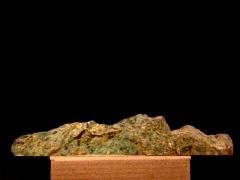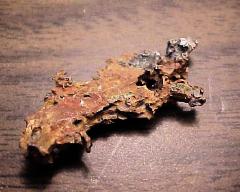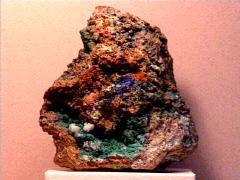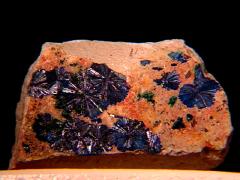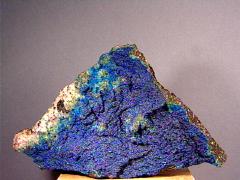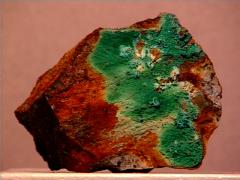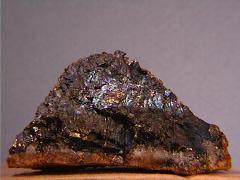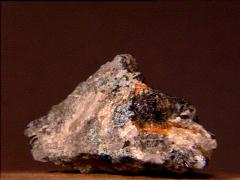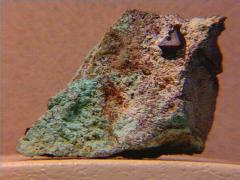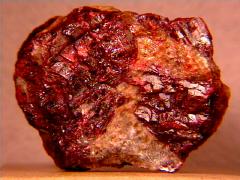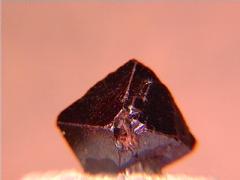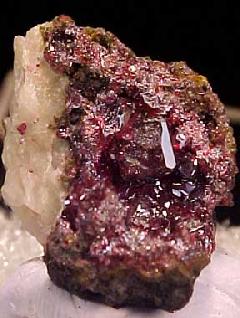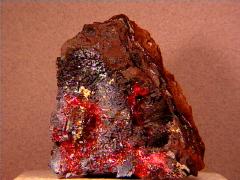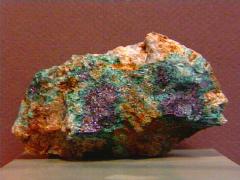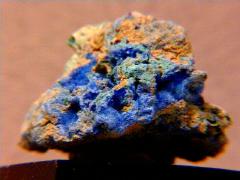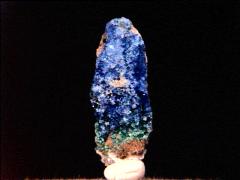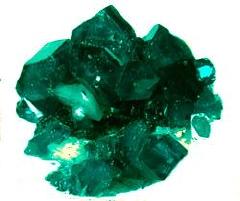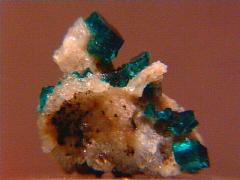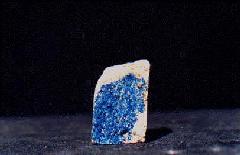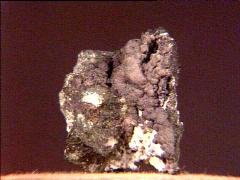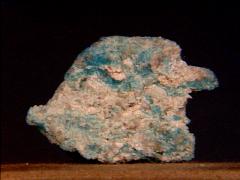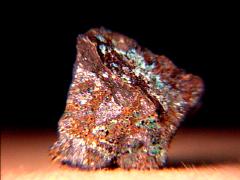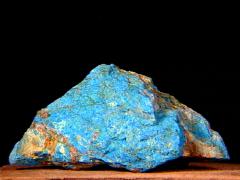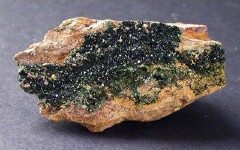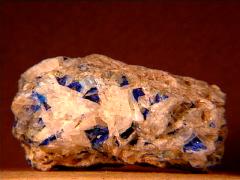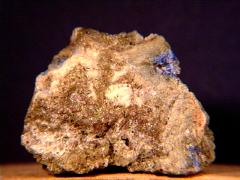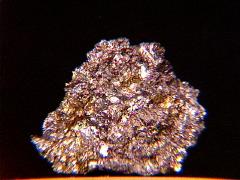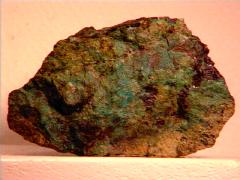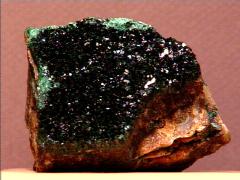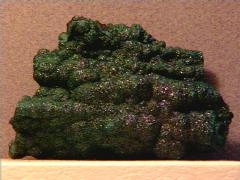Sunday, January 31, 2010
What Are The Odds?
Warning: This article has hardly any substance. It will be of little worth for the purposes of education. It has small merit as an investment piece. The author is fatigued, and is taking a break from sorting copper cents from rolls obtained in $25 boxes from the nearby bank. Why would he even do that? Because he believes that the copper cents - those made by the United States Mint, prior to 1982 - which were comprised of an alloy of 95% copper with 5% zinc, will gain in value. If not immediately, than in the future. He believes that inflation will lead to price rises across the board.
Since he believes that the onset of hyperinflation is inevitable, he feels that one way to preserve your purchasing power is by accruing tangible silver, and gold coins ingots or bars to be held in your physical possession. No, he doesn't mean to imply that you carry them around in your pocket, but that you store them in a secure location, perhaps within a well-hidden safe, that you have easy access to. The author would recommend a safe-deposit box, were it not for some frightening stories that you can find by googling, concerning the criminal abuses that officials are sometimes conducting to confiscate their contents.
Revisiting the earlier premise of holding some silver and gold, the author considers these items real money. As opposed to the worthless toilet paper fiat currency with presidential images imprinted on them which carry a mandate of legal tender but are in actuality no better than scrip. If you want to carry pictures of the inhabitants of the oval office, and imagine that they have purchasing power, than you would be much better off accumulating the monetary version in coinage by saving Presidents Kennedy, Roosevelt, and Washington, in pre-1965 metallic form.
And don't forget Abe and Tom. Lincoln and Jefferson. They're affordable for anyone to hold, even those who can't afford an ounce of silver. Save your nickels and your copper cents. You can visit Coinflation.com to learn that, at times, the intrinsic value of the content of the cupronickel alloy present in nickels exceeds its face value. This, of course, varies with the price of those base metal commodities. The value of the penny, the copper ones, is well in excess of double face value. If and when the present melt ban is lifted on these two coins, it is a certainty that they will swiftly vanish from circulation as people melt them for their base metal content.
That's it for today's concise version of real-money-acts-as-a-store-of-wealth lesson. Nothing new. Just rehashed the same content from a different slant. Enough for now. It's time to play. Whimsy, here we come. You can stop reading now, if what you're looking for is sage offerings of investment advice. We're going to directly contradict the theme I offered in an earlier piece, that being related to optimizing your time to attain your goals. If you want to reach a goal, it is best if you direct your efforts in single-minded focus to accomplish your desires. Any tangent from your target will just lengthen the time necessary to achieve your aims.
In an article entitled Counter Productivity, I lambasted those who proclaim to be intent on sorting and saving copper cents, but drift away from that goal by investing an inordinate amount of time to documenting their every discovery. If their true goal is to save as much copper as possible, then they are wasting their time by all of their minute recordings, followed by posting and responding to similar threads on the penny forums in which they participate. However, looked at from a different aspect, the search for copper can be rewarding, if you develop the attitude of a collector.
Collectors probably look at hoarders as more than slightly crazed fanatics. "You're missing all the fun," they might say. "There's a thrill of discovery when you search," they might add, "and are able to find a scarce date penny, a key date in good condition, or an Indian Head penny that is still in circulation after more than one hundred years." So, today, taking a break from amassing yet more pennies in my growing hoard of copper cents, I am going to indulge exploring a thought that occurred to me while inspecting a box of wheaties that was filling up.
As I sort copper, I don't specifically look for wheaties, but when I find one, I toss them into a separate box, date unexamined. The box was starting to get a goodly number, perhaps five hundred, inside. So I decided I better separate them into two piles, one before 1940, one after. I intend, someday, to go through and see how many slots in a penny album I can fill. Maybe next time that I need a break from sorting. So I was quickly examing the dates on the wheaties to determine into which pile to place them. As I was doing so, I ran across an anomaly which made me wonder what the likelihood of such a chance occurrence might be.
What happened was that I found, in order, a 1955-D, then a 1955, then a 1955-S. What are the odds of that happening? Before we venture into the actual computations, let me go on and state that there were a total of about five 1955-D in the entire lot, but only one each of the two others. So, even before I get out the calculator to number crunch, I'm thinking the odds have to be fairly astronomical for this to occur. Of course, this is all entirely meaningless, but it just appeals to the mathematical side of my brain, and I'm curious to see what the answer will be. I feel like Nicholas Cage in National Treasure.
In order to determine the odds of three items appearing sequentially, you have to determine the odds of each occurring individually, then multiply the three to obtain your answer. For instance, if you have three items that have a statistical probability of appearing one out of four times, one out of five times, and one out of six times, then your result would be obtained by multiplying 1/4 x 1/5 x 1/6 to reach an answer of 1/120. The exact sequence you had experienced would only occur one time in one hundred and twenty, less than a one percent likelihood. I know in advance my answer will be far smaller, probably infinitesimal in comparison.
There were 28,650,477,747 wheaties produced between their inception in 1909, until their discontinuation in 1959, at which time the pattern was changed from the familiar design to one featuring the Lincoln Memorial. According to Coins Magazine, in 1955 the Mint produced the following numbers of cents: Denver - 563,257,500, Philadelphia - 330,958,000, and San Francisco - 44,610,000. If I were to try and multiply these numerators and denominators I'm sure it would frazzle the innards of my little handheld calculator, so let's simplify these fractions before we proceed.
Denver = 563,257,500/28,650,477,747 = 1/50.86, or a little less than a two percent chance of finding a 1955-D among a lot of wheaties. Philadelphia = 330,958,000/28,650,477,747 = 1/86.57, or a little better than a one percent chance of finding a 1955 date. And finally San Francisco = 44,610,000/28,650,477,747 = 1/642.24 chance of running across a 1955-S from the same lot of wheat pennies. So what are our odds of finding all three dates and mint marks in consecutive order? What do you get when you multiply 1/50.86 x 1/86.57 x 1/642.24?
The odds of my finding those three cents in that exact order were one in 2,827,750.
That's like saying pick a day between now and the year 7737 BC and getting it right. Wow! Not as hard as winning the California Lottery, or Powerball, but impressive nonetheless. Maybe I should head out and buy a lottery ticket? I could gather a pocketfull of useless zincs and head out to play the penny slots at the nearest Indian Casino, but I think my odds of striking it rich are much better saving copper cents, instead of spending zinc. I already feel like a winner, watching that steady stream of copper cents spit out by my Ryedale. Want to line up three cherries? Or a giant red 777? Care to scream "Jackpot?" Then play copper to jump in price, and you could hit the big payoff. There's a pretty good chance that will happen, any day now. The odds are in your favor.
Buy Silver. Buy Gold. Save Copper. Start Now.
Since he believes that the onset of hyperinflation is inevitable, he feels that one way to preserve your purchasing power is by accruing tangible silver, and gold coins ingots or bars to be held in your physical possession. No, he doesn't mean to imply that you carry them around in your pocket, but that you store them in a secure location, perhaps within a well-hidden safe, that you have easy access to. The author would recommend a safe-deposit box, were it not for some frightening stories that you can find by googling, concerning the criminal abuses that officials are sometimes conducting to confiscate their contents.
Revisiting the earlier premise of holding some silver and gold, the author considers these items real money. As opposed to the worthless toilet paper fiat currency with presidential images imprinted on them which carry a mandate of legal tender but are in actuality no better than scrip. If you want to carry pictures of the inhabitants of the oval office, and imagine that they have purchasing power, than you would be much better off accumulating the monetary version in coinage by saving Presidents Kennedy, Roosevelt, and Washington, in pre-1965 metallic form.
And don't forget Abe and Tom. Lincoln and Jefferson. They're affordable for anyone to hold, even those who can't afford an ounce of silver. Save your nickels and your copper cents. You can visit Coinflation.com to learn that, at times, the intrinsic value of the content of the cupronickel alloy present in nickels exceeds its face value. This, of course, varies with the price of those base metal commodities. The value of the penny, the copper ones, is well in excess of double face value. If and when the present melt ban is lifted on these two coins, it is a certainty that they will swiftly vanish from circulation as people melt them for their base metal content.
That's it for today's concise version of real-money-acts-as-a-store-of-wealth lesson. Nothing new. Just rehashed the same content from a different slant. Enough for now. It's time to play. Whimsy, here we come. You can stop reading now, if what you're looking for is sage offerings of investment advice. We're going to directly contradict the theme I offered in an earlier piece, that being related to optimizing your time to attain your goals. If you want to reach a goal, it is best if you direct your efforts in single-minded focus to accomplish your desires. Any tangent from your target will just lengthen the time necessary to achieve your aims.
In an article entitled Counter Productivity, I lambasted those who proclaim to be intent on sorting and saving copper cents, but drift away from that goal by investing an inordinate amount of time to documenting their every discovery. If their true goal is to save as much copper as possible, then they are wasting their time by all of their minute recordings, followed by posting and responding to similar threads on the penny forums in which they participate. However, looked at from a different aspect, the search for copper can be rewarding, if you develop the attitude of a collector.
Collectors probably look at hoarders as more than slightly crazed fanatics. "You're missing all the fun," they might say. "There's a thrill of discovery when you search," they might add, "and are able to find a scarce date penny, a key date in good condition, or an Indian Head penny that is still in circulation after more than one hundred years." So, today, taking a break from amassing yet more pennies in my growing hoard of copper cents, I am going to indulge exploring a thought that occurred to me while inspecting a box of wheaties that was filling up.
As I sort copper, I don't specifically look for wheaties, but when I find one, I toss them into a separate box, date unexamined. The box was starting to get a goodly number, perhaps five hundred, inside. So I decided I better separate them into two piles, one before 1940, one after. I intend, someday, to go through and see how many slots in a penny album I can fill. Maybe next time that I need a break from sorting. So I was quickly examing the dates on the wheaties to determine into which pile to place them. As I was doing so, I ran across an anomaly which made me wonder what the likelihood of such a chance occurrence might be.
What happened was that I found, in order, a 1955-D, then a 1955, then a 1955-S. What are the odds of that happening? Before we venture into the actual computations, let me go on and state that there were a total of about five 1955-D in the entire lot, but only one each of the two others. So, even before I get out the calculator to number crunch, I'm thinking the odds have to be fairly astronomical for this to occur. Of course, this is all entirely meaningless, but it just appeals to the mathematical side of my brain, and I'm curious to see what the answer will be. I feel like Nicholas Cage in National Treasure.
In order to determine the odds of three items appearing sequentially, you have to determine the odds of each occurring individually, then multiply the three to obtain your answer. For instance, if you have three items that have a statistical probability of appearing one out of four times, one out of five times, and one out of six times, then your result would be obtained by multiplying 1/4 x 1/5 x 1/6 to reach an answer of 1/120. The exact sequence you had experienced would only occur one time in one hundred and twenty, less than a one percent likelihood. I know in advance my answer will be far smaller, probably infinitesimal in comparison.
There were 28,650,477,747 wheaties produced between their inception in 1909, until their discontinuation in 1959, at which time the pattern was changed from the familiar design to one featuring the Lincoln Memorial. According to Coins Magazine, in 1955 the Mint produced the following numbers of cents: Denver - 563,257,500, Philadelphia - 330,958,000, and San Francisco - 44,610,000. If I were to try and multiply these numerators and denominators I'm sure it would frazzle the innards of my little handheld calculator, so let's simplify these fractions before we proceed.
Denver = 563,257,500/28,650,477,747 = 1/50.86, or a little less than a two percent chance of finding a 1955-D among a lot of wheaties. Philadelphia = 330,958,000/28,650,477,747 = 1/86.57, or a little better than a one percent chance of finding a 1955 date. And finally San Francisco = 44,610,000/28,650,477,747 = 1/642.24 chance of running across a 1955-S from the same lot of wheat pennies. So what are our odds of finding all three dates and mint marks in consecutive order? What do you get when you multiply 1/50.86 x 1/86.57 x 1/642.24?
The odds of my finding those three cents in that exact order were one in 2,827,750.
That's like saying pick a day between now and the year 7737 BC and getting it right. Wow! Not as hard as winning the California Lottery, or Powerball, but impressive nonetheless. Maybe I should head out and buy a lottery ticket? I could gather a pocketfull of useless zincs and head out to play the penny slots at the nearest Indian Casino, but I think my odds of striking it rich are much better saving copper cents, instead of spending zinc. I already feel like a winner, watching that steady stream of copper cents spit out by my Ryedale. Want to line up three cherries? Or a giant red 777? Care to scream "Jackpot?" Then play copper to jump in price, and you could hit the big payoff. There's a pretty good chance that will happen, any day now. The odds are in your favor.
Buy Silver. Buy Gold. Save Copper. Start Now.
Thursday, January 28, 2010
Counter Productivity
How many times during the Summer Olympics of 2008 did you watch Michael Phelps compete in his quest to accomplish the historic goal of winning eight gold medals? Were you able to watch most of his races? Did you marvel at his durability, strength, and technique? As he won race after race, some by wide margins, did you begin to feel like you were witnessing one of the most incredible athletic performances in sports history? His accomplishments rank alongside Mark Spitz's, as spectacles of the natatorium sufficient to stun Neptune or Poseidon, and astonish the remainder of the Gods.
Did you figure out how Phelps was able to win? Sportscasters slowed the tapes down, giving way on the microphones to swimming experts who analyzed the strokes in minute detail. They praised the instructional insights which had allowed observant coaches to parse every element of Phelp's motion and impart racing tips to optimize his speed, such that his resultant technique maximized his every advantage. His form was non pareil while he focused on winning. He was, in real life, a veritable swimming automaton, as heroic as an Aquaman comic book character vanquishing dispirited foes.
You can give credit to morale, to coaching, to indomitable spirit, a never-say-die attitude, to physical indefatigability for his accomplishments. There are any number of factors which contributed to his success, but if you were to attribute his results to those causes, you would miss the most important element of his wins. Michael Phelps won those races, because his competitors all lost them. They lost because, for one reason or another, in the final analysis, they lacked some aspect of the constitution of physical, mental, and spiritual resolve that is required of championship athletes.
This is not to say that they didn't expend countless hours rigorously training as well. Nor to imply that their coaching was suspect. I'm only suggesting that incredible physical performances in athletic history, whether they be incidents that are one time events - like the victory of the underdog Fresno State Baseball team in the 2008 NCAA Finals, when they became the lowest seeded team to ever win the championship - or accomplishments that are cumulative, occurring over a season or a lifetime, so far surpass the deeds of competitors that they are best judged by different standards.
An athlete seeking excellence will eat, think, train, and sleep, dreaming of attaining his or her goals. They are single-minded in their focus, and they will let nothing deter them from this pursuit. By definition, they will never let anything thwart their desire, or else they will never ascend the pinnacle of achievement necessary to become a champion and win a gold medal. Maybe they'd win a silver, or a bronze. They might be pretty damned good at what they do, perhaps the most talented in their country. But they wouldn't be the best in the world, whether it be swimming, or golf, most home runs in history, or the fastest man alive in the 100 meter dash.
So how am I going to tie all this sports babble into the world of investing? In prior columns I have advocated that you take advantage of this moment in history in which you find yourself, and set about to accomplish a goal which, in a few years, will become impossible. As if you had discovered a spatial discontinuity, a rift in the fabric of time, you have the opportunity now - and perhaps for as long as another eighteen months - to reap the same benefits as if you had been present in the America of 1965. What do I mean by this?
Remember that year? 1965 was the year in which the United States Mint changed the alloy of circulating coinage of the dime and the quarter from one with ninety percent silver content to one made of cupronickel. Real money underwent debasement. Silver halves went from ninety percent to forty percent silver, and that for only four more years, until they too were fabricated from the same cupronickel alloy. The public inherently understood that the older coins were somehow of greater value than their replacements, and Gresham's Law ensured they rapidly removed them from circulation.
Those ninety percent silver coins were, for all intents and purposes, gone from circulation by 1968. Sure, you could still search for them, and encounter a few from time to time. People still do that, spending countless hours to glean a lone sparkling argent gem from the rolls they obtain and assiduously examine. So how does the disappearance of real money from circulation after 1965 have any bearing on you today? The same thing is now occurring, but this time it's not an event which impacts dimes, quarters, or half dollars. This time the lowly Lincoln cent is being affected.
Pennies are disappearing, unnoticed by the public. Collapsing Cents Census Syndrome (CCCS) is not something you will see in the media, nor is it discussed by scientists concerned by its impact on commerce. But the copper in your change is steadily diminishing, and being replaced by zinc. You see, prior to 1982, Lincoln cents were made from 95% copper and 5% zinc. Subsequent to that, the alloy retained the same components, but in a different ratio. The zinc became predominant in the penny, with a core of zinc covered by a thin layer of copper. All but 2.5% of the copper was removed from the penny. Real money was becoming debased.
Now, behind the scenes, there are those who gather pennies from banks and scour them for their copper content, sorting through rolls by the thousands, sifting the copper from their ranks, and saving them. Why in the world would they do that? Because the cent isn't worth a cent. It's worth at least twice that much. Check Coinflation.com if you don't believe me. The prices vary according to the scrap price of number two copper posted daily on Kitco, but recently an individual penny was worth approximately 2.2 cents. Not much when considered on an individual basis, but what's that worth when multiplied hundreds of thousands of times?
The only reason we still have copper circulating in our change is because there is currently a law forbidding melting of the cent and the nickel to deter loss of these coins to parties that would melt them for their base metal content. That law was passed in late 2006 and went into effect in the early months of 2007. If it weren't for that mandate - acting as a partial deterrent to those individuals intent upon hoarding these valuable cents for resale upon their eventual revaluation - these pre-1982 copper pennies, like the silver coins of yesteryear, would already have vanished.
So, here's the window of opportunity that I mentioned. Silver and gold act as safe havens in a time of currency depreciation which we have been experiencing since the FED was created. Ninety-six percent loss of purchasing power since 1913, not bad for ruination of a fiat currency. Award them a gold (a barbarous relic) medal, and let's just hope they aren't entered in eight races. Real money maintains your purchasing power, and may gain value prodigiously during hyperinflation. Since not everyone can afford silver or gold, my past columns have explained that, on a smaller basis, base metals coinage nickel and copper afford the same advantages as do precious metals.
So, then, how do we become champions of copper cent sorting and saving? We do it by single- minded focus, setting a goal, and then letting nothing act as an obstacle to attainment of that target. Anything else would be counterproductive. Did you see any of the other swimming competitors staring despairingly at Phelp's heels easily outdistancing them? Notice them admiring his Speedo's? No. They were bent to their tasks, giving it their all. It just wasn't quite good enough to win. Why would anyone, with a goal in mind, do anything other than their utmost to accomplish their dreams?
Why would someone who saves copper cents, record in minute detail their findings in each roll they encounter and in each box that they sort? Wouldn't that be detrimentally time-consuming? To list in voluminous findings, for instance "out of 1000 cents sorted, 298 were copper for a percentage of 29.8%, there were eleven wheaties, three Canadians, one Norwegian, one from the Bahamas, and the rest were zinc." Isn't this just a little bit obsessive? Like a deranged baseball statistician on steroids, these sorters are compulsively recording every detail of their searches, then sharing them with like-minded others on penny forums. Isn't all this "counter productivity" counterproductive?
Do collectors who persist in this misguided allocation of their time derive more pleasure from the hunt, than the capture? So that their quest is guided not so much by acquisition as it is by a sense of discovery? If so, I applaud the pleasure they derive from their hobby. But let's redefine them merely as hobbyists, because the single-minded work ethic necessary to become focused champions of this enterprise is missing from these copper enthusiasts.
You don't see the big hitters of this new industry, who comprehend the nature of its time-limited opportunity, expending the time it takes to describe in detail their every find. They can't afford to become distracted. They understand that to do that would obstruct them from their primary goal. Which - while the chance to do so exists - is to accrue the largest pile of copper cents they can preserve, as rapidly as it can be amassed. Because, ultimately, that's what champions do, better than anyone else. Count on it.
Buy Silver. Buy Gold. Save Copper. Start Now.
Did you figure out how Phelps was able to win? Sportscasters slowed the tapes down, giving way on the microphones to swimming experts who analyzed the strokes in minute detail. They praised the instructional insights which had allowed observant coaches to parse every element of Phelp's motion and impart racing tips to optimize his speed, such that his resultant technique maximized his every advantage. His form was non pareil while he focused on winning. He was, in real life, a veritable swimming automaton, as heroic as an Aquaman comic book character vanquishing dispirited foes.
You can give credit to morale, to coaching, to indomitable spirit, a never-say-die attitude, to physical indefatigability for his accomplishments. There are any number of factors which contributed to his success, but if you were to attribute his results to those causes, you would miss the most important element of his wins. Michael Phelps won those races, because his competitors all lost them. They lost because, for one reason or another, in the final analysis, they lacked some aspect of the constitution of physical, mental, and spiritual resolve that is required of championship athletes.
This is not to say that they didn't expend countless hours rigorously training as well. Nor to imply that their coaching was suspect. I'm only suggesting that incredible physical performances in athletic history, whether they be incidents that are one time events - like the victory of the underdog Fresno State Baseball team in the 2008 NCAA Finals, when they became the lowest seeded team to ever win the championship - or accomplishments that are cumulative, occurring over a season or a lifetime, so far surpass the deeds of competitors that they are best judged by different standards.
An athlete seeking excellence will eat, think, train, and sleep, dreaming of attaining his or her goals. They are single-minded in their focus, and they will let nothing deter them from this pursuit. By definition, they will never let anything thwart their desire, or else they will never ascend the pinnacle of achievement necessary to become a champion and win a gold medal. Maybe they'd win a silver, or a bronze. They might be pretty damned good at what they do, perhaps the most talented in their country. But they wouldn't be the best in the world, whether it be swimming, or golf, most home runs in history, or the fastest man alive in the 100 meter dash.
So how am I going to tie all this sports babble into the world of investing? In prior columns I have advocated that you take advantage of this moment in history in which you find yourself, and set about to accomplish a goal which, in a few years, will become impossible. As if you had discovered a spatial discontinuity, a rift in the fabric of time, you have the opportunity now - and perhaps for as long as another eighteen months - to reap the same benefits as if you had been present in the America of 1965. What do I mean by this?
Remember that year? 1965 was the year in which the United States Mint changed the alloy of circulating coinage of the dime and the quarter from one with ninety percent silver content to one made of cupronickel. Real money underwent debasement. Silver halves went from ninety percent to forty percent silver, and that for only four more years, until they too were fabricated from the same cupronickel alloy. The public inherently understood that the older coins were somehow of greater value than their replacements, and Gresham's Law ensured they rapidly removed them from circulation.
Those ninety percent silver coins were, for all intents and purposes, gone from circulation by 1968. Sure, you could still search for them, and encounter a few from time to time. People still do that, spending countless hours to glean a lone sparkling argent gem from the rolls they obtain and assiduously examine. So how does the disappearance of real money from circulation after 1965 have any bearing on you today? The same thing is now occurring, but this time it's not an event which impacts dimes, quarters, or half dollars. This time the lowly Lincoln cent is being affected.
Pennies are disappearing, unnoticed by the public. Collapsing Cents Census Syndrome (CCCS) is not something you will see in the media, nor is it discussed by scientists concerned by its impact on commerce. But the copper in your change is steadily diminishing, and being replaced by zinc. You see, prior to 1982, Lincoln cents were made from 95% copper and 5% zinc. Subsequent to that, the alloy retained the same components, but in a different ratio. The zinc became predominant in the penny, with a core of zinc covered by a thin layer of copper. All but 2.5% of the copper was removed from the penny. Real money was becoming debased.
Now, behind the scenes, there are those who gather pennies from banks and scour them for their copper content, sorting through rolls by the thousands, sifting the copper from their ranks, and saving them. Why in the world would they do that? Because the cent isn't worth a cent. It's worth at least twice that much. Check Coinflation.com if you don't believe me. The prices vary according to the scrap price of number two copper posted daily on Kitco, but recently an individual penny was worth approximately 2.2 cents. Not much when considered on an individual basis, but what's that worth when multiplied hundreds of thousands of times?
The only reason we still have copper circulating in our change is because there is currently a law forbidding melting of the cent and the nickel to deter loss of these coins to parties that would melt them for their base metal content. That law was passed in late 2006 and went into effect in the early months of 2007. If it weren't for that mandate - acting as a partial deterrent to those individuals intent upon hoarding these valuable cents for resale upon their eventual revaluation - these pre-1982 copper pennies, like the silver coins of yesteryear, would already have vanished.
So, here's the window of opportunity that I mentioned. Silver and gold act as safe havens in a time of currency depreciation which we have been experiencing since the FED was created. Ninety-six percent loss of purchasing power since 1913, not bad for ruination of a fiat currency. Award them a gold (a barbarous relic) medal, and let's just hope they aren't entered in eight races. Real money maintains your purchasing power, and may gain value prodigiously during hyperinflation. Since not everyone can afford silver or gold, my past columns have explained that, on a smaller basis, base metals coinage nickel and copper afford the same advantages as do precious metals.
So, then, how do we become champions of copper cent sorting and saving? We do it by single- minded focus, setting a goal, and then letting nothing act as an obstacle to attainment of that target. Anything else would be counterproductive. Did you see any of the other swimming competitors staring despairingly at Phelp's heels easily outdistancing them? Notice them admiring his Speedo's? No. They were bent to their tasks, giving it their all. It just wasn't quite good enough to win. Why would anyone, with a goal in mind, do anything other than their utmost to accomplish their dreams?
Why would someone who saves copper cents, record in minute detail their findings in each roll they encounter and in each box that they sort? Wouldn't that be detrimentally time-consuming? To list in voluminous findings, for instance "out of 1000 cents sorted, 298 were copper for a percentage of 29.8%, there were eleven wheaties, three Canadians, one Norwegian, one from the Bahamas, and the rest were zinc." Isn't this just a little bit obsessive? Like a deranged baseball statistician on steroids, these sorters are compulsively recording every detail of their searches, then sharing them with like-minded others on penny forums. Isn't all this "counter productivity" counterproductive?
Do collectors who persist in this misguided allocation of their time derive more pleasure from the hunt, than the capture? So that their quest is guided not so much by acquisition as it is by a sense of discovery? If so, I applaud the pleasure they derive from their hobby. But let's redefine them merely as hobbyists, because the single-minded work ethic necessary to become focused champions of this enterprise is missing from these copper enthusiasts.
You don't see the big hitters of this new industry, who comprehend the nature of its time-limited opportunity, expending the time it takes to describe in detail their every find. They can't afford to become distracted. They understand that to do that would obstruct them from their primary goal. Which - while the chance to do so exists - is to accrue the largest pile of copper cents they can preserve, as rapidly as it can be amassed. Because, ultimately, that's what champions do, better than anyone else. Count on it.
Buy Silver. Buy Gold. Save Copper. Start Now.
Monday, January 18, 2010
What's Behind Lincoln On The Cent?
I usually write about how sorting and saving cents, the pre-1982 ones that were fabricated from 95% copper, represents an opportunity for small investors to ensure themselves against a loss of purchasing power by holding tangible real money. Similar to silver and gold in this regard, as the dollar continues its long descent down the depreciation slide, commodities priced in dollars will rise in price. Those individuals who recognize this trend and take action now to protect themselves, will position themselves to survive hyperinflation and perhaps benefit from it.
Hard money advocates - those who place their trust in precious and base metals coinage - will most certainly have a ready cache of recognizable money to barter with when no one any longer honors federal reserve notes and refuses to accept them for purchases. Should hyperinflation arrive, gold coins will be useful for our largest transactions, and silver - or the smallest fractional gold coins - for commerce too small for usage of one ounce gold to be practical. Everyday barter and the tiniest of purchases will still require nickels and pennies.
Each of these metals will increase in value with the tsunami of excess liquidity already set in motion by the FED. The trillion dollar trigger - representing a combination of the TARP bailout and quantitative easing in support of Treasury auctions - has already been pulled. Bumbling Ben still has more shots in his revolver, and he will continue to empty his gun into the corpse of the dollar until there is no hope of resuscitation. It would take a miracle to resurrect the dollar, and though our coinage states "In God We Trust," I doubt the sentiment is reciprocal.
So hyperinflation is coming down the pike. That's pretty much set in stone. It's just a question of when it will arrive. Enough said on gloom and doom for now. Today I'd like to talk about something unrelated to investing, but which can occur to you as an offshoot of your stance to build a position in copper bullion by saving cents. If, as happened to me, you begin to examine the pre-1982 cents you are sorting, your curiosity might take hold. Every so often you will encounter older pennies among the thousands you sort. You're going to run across wheaties.
Wheaties are one way in which collectors of the Lincoln cent refer to the reverse side of older American pennies. On pennies that were minted between 1909 and 1958, there are two ears of wheat adorning the back of the cent. In 1959, that design was changed to a depiction of the Lincoln Memorial. Subsequently, that was changed as well to honor the bicentennial of Lincoln's birth, as well as marking the one hundred year anniversary of the first issuance of the Lincoln cent. There are now four different commemorative reverses in circulation as of 2009.
"Birth and early childhood in Kentucky" portrays a log cabin - similar to the one where he was born, on February 12, 1809, - near Nolin Creek, three miles south of present-day Hodgenville in Larue County, Kentucky. "The Lincoln family lived on 30 acres of the 228-acre Knob Creek Farm near Hodgenville from the time Abraham was two-and-a-half until he was nearly eight years old. It was here that he grew big enough to carry water and gather firewood." End quote. http://www.usmint.gov/mint_programs/lincolnredesign/index.cfm?action=lincolnPenny&Aspect=1
"Formative years in Indiana" depicts a young Abraham sitting upon a log, reading as he takes a break from railsplitting. The family had moved in the fall of 1816, relocating from his birthplace in Kentucky to Spencer County, Indiana. As Lincoln grew he became toughened by the rigors of farm life, learning to plow and wield an axe. He also developed a love of reading, curried by his parent's interest in books. Abraham became an avid reader, and by the time he was eleven had assisted in his own education by completing such books as "Life of Washington," and "The Autobiography of Benjamin Franklin." http://www.usmint.gov/mint_programs/lincolnredesign/index.cfm?action=lincolnPenny&Aspect=2
"Professional Life in Illinois" presents him as a young professional standing in front of the state capitol building in Springfield. The family had moved to Illinois in 1830, whereupon Lincoln took advantage of his new environs to learn a variety of skills, including piloting a steamboat, before developing an interest in politics. 1834 saw him embark on this new career when he was elected to the Illinois General Assembly. He studied and received a law degree by 1836. Within a decade he had won a seat in the House of Representatives. The senatorial race of 1858, and the ensuing Lincoln-Douglas debates crowned him with national renown. The Republicans nominated him for President in 1860, and the rest is history. http://www.usmint.gov/mint_programs/lincolnredesign/index.cfm?action=lincolnPenny&Aspect=3
"Presidency in Washington, DC" depicts Lincoln's abbreviated tenure in office from 1861 to 1865. "The approved design for aspect four of Lincoln's life features the half-finished United States Capitol dome, symbolizing a Nation torn apart by civil war and the resolve Lincoln showed as he guided the country through its most grave crisis." End quote. http://www.usmint.gov/mint_programs/lincolnredesign/index.cfm?action=lincolnPenny&Aspect=4
Following the termination of the commemorative issues, the reverse will again change in 2010. The new design will feature a the emblem of a shield, with thirteen vertical stripes representing the states joined in one compact union. A scroll, with the inscription ONE CENT, is draped across the shield. Quote,"The new design is emblematic of President Abraham Lincoln's preservation of the United States as a single and united country." http://www.usmint.gov/mint_programs/lincolnredesign/?action=2010Penny
I kind of got sidetracked there. That's easy to do when discussing such a fascinating subject. Back to the wheaties. As you sort, you will discover one or two wheaties on occasion. Most likely, those you find will date back to the Fifties, and the Forties. Much less frequently, you might even encounter a wheatie dating back to the Thirties. You have to be sorting a high volume of coins to discover these last two decades, but on rare occasions you may even run across a penny minted in the Twenties, or the Teens. Finding a cent that old in circulation is cause for elation, pennies like that are a rare find.
Just how often might you encounter wheaties in circulation? I participate in a forum that discusses just this issue, among other coin collecting minutiae. Realcent.forumco.com is an Internet forum with about 1000 members who share similar interests which involve collecting, searching, sorting, saving, and recycling of base and precious metals coins and ancillary forms of those metals. The topic frequently arises as to how many wheaties one is finding in boxes of cents obtained from banks, or customer wrapped rolls from credit unions or banks.
The answers differ, and are dependent upon a number of variables. But a consensus - if I had to pick a number - seems to be a bit less than one percent of the copper cents you segregate will turn out to be wheaties. Those individuals who are busy building a large hoard of copper cents will likely find that they lack sufficient time to inspect their machine-sorted coins to further separate the pre-1959 wheaties from the other copper cents. It's not justified by their worth. Currently, each wheatie in fair condition will bring about four times face value if you can find a buyer.
Devoting the time and effort to further refine your copper stockpile is something more likely to occur if you are handsorting. In that instance, you will take notice of each wheatie as you add to your accumulation of cents, and its likely that your acquisitive nature will result in your desire to obtain an album and start a collection. Curiosity, at some point, will force this upon you. You'll find yourself asking "I wonder how many I have now? Would it be enough to make a good start at filling a penny folder?" This can develop into an entertaining aspect of the copper cents saving enterprise. So what are the odds of finding any good wheaties?
We've already determined that the percentages are less than one in a hundred from copper cents. We'll need to pick a precise number for the calculations to follow, so I'm arbitrarily going to assign this conservative basis (your results may vary) to assist that intent: you will find one wheatie among every 110 pre-1982 cents you search. Recalling that copper cents only represent about 20 to 25 percent of all cents in circulation, let's remain conservative and use the lower number. Your chances of finding a wheatie, then, in change would be about 1 in 550. Search a $25 box and you should find between four and five pre-1959's.
How about the individual decades? A little bit of arithmetic can provide a guesstimate. If you tally up the total mintage figures - provided in Coins magazine - of all the cents produced between 1909 and 1958, it will result in a sum of 28,650,477,747. Over 28 billion. Broken into decades - of which the Teen's includes 1909 - we get these results. Teens 2,125,713,683, Twenties 1,664,218.000, Thirties 2,214,324,143, Forties 13,385,520,242, and Fifties 9,260,701,408. Review of these findings yields some interesting anomalies.
I would have thought that the Mint would have marginally increased production on an annual basis, showing an incrementally larger number produced each year. But that isn't the case, not on an annual basis, nor even for periods of a decade. There were more cents produced in the Teens then there were in the Twenties, and nearly as many as there were in the Thirties. There were fewer cents produced in the Fifties then in the Forties. What does this mean? You're more likely to find older wheaties than newer ones, to some extent.
You have a 32.32% chance of finding a Fifties cent among your wheaties, but a 46.72% chance of discovering a Forties cent. Twenties might be the hardest to find with only a 5.81% likelihood, followed by Teens with a 7.42% chance. You would have a 7.73% chance of unearthing a Thirties cent. So about four out of five wheaties you find will be common dates in the Forties and Fifties. This determination is based solely upon original mintages and does not account for any unknown variables such as loss or hoarding of particular years, that might cause the results to vary.
Hard money advocates - those who place their trust in precious and base metals coinage - will most certainly have a ready cache of recognizable money to barter with when no one any longer honors federal reserve notes and refuses to accept them for purchases. Should hyperinflation arrive, gold coins will be useful for our largest transactions, and silver - or the smallest fractional gold coins - for commerce too small for usage of one ounce gold to be practical. Everyday barter and the tiniest of purchases will still require nickels and pennies.
Each of these metals will increase in value with the tsunami of excess liquidity already set in motion by the FED. The trillion dollar trigger - representing a combination of the TARP bailout and quantitative easing in support of Treasury auctions - has already been pulled. Bumbling Ben still has more shots in his revolver, and he will continue to empty his gun into the corpse of the dollar until there is no hope of resuscitation. It would take a miracle to resurrect the dollar, and though our coinage states "In God We Trust," I doubt the sentiment is reciprocal.
So hyperinflation is coming down the pike. That's pretty much set in stone. It's just a question of when it will arrive. Enough said on gloom and doom for now. Today I'd like to talk about something unrelated to investing, but which can occur to you as an offshoot of your stance to build a position in copper bullion by saving cents. If, as happened to me, you begin to examine the pre-1982 cents you are sorting, your curiosity might take hold. Every so often you will encounter older pennies among the thousands you sort. You're going to run across wheaties.
Wheaties are one way in which collectors of the Lincoln cent refer to the reverse side of older American pennies. On pennies that were minted between 1909 and 1958, there are two ears of wheat adorning the back of the cent. In 1959, that design was changed to a depiction of the Lincoln Memorial. Subsequently, that was changed as well to honor the bicentennial of Lincoln's birth, as well as marking the one hundred year anniversary of the first issuance of the Lincoln cent. There are now four different commemorative reverses in circulation as of 2009.
"Birth and early childhood in Kentucky" portrays a log cabin - similar to the one where he was born, on February 12, 1809, - near Nolin Creek, three miles south of present-day Hodgenville in Larue County, Kentucky. "The Lincoln family lived on 30 acres of the 228-acre Knob Creek Farm near Hodgenville from the time Abraham was two-and-a-half until he was nearly eight years old. It was here that he grew big enough to carry water and gather firewood." End quote. http://www.usmint.gov/mint_programs/lincolnredesign/index.cfm?action=lincolnPenny&Aspect=1
"Formative years in Indiana" depicts a young Abraham sitting upon a log, reading as he takes a break from railsplitting. The family had moved in the fall of 1816, relocating from his birthplace in Kentucky to Spencer County, Indiana. As Lincoln grew he became toughened by the rigors of farm life, learning to plow and wield an axe. He also developed a love of reading, curried by his parent's interest in books. Abraham became an avid reader, and by the time he was eleven had assisted in his own education by completing such books as "Life of Washington," and "The Autobiography of Benjamin Franklin." http://www.usmint.gov/mint_programs/lincolnredesign/index.cfm?action=lincolnPenny&Aspect=2
"Professional Life in Illinois" presents him as a young professional standing in front of the state capitol building in Springfield. The family had moved to Illinois in 1830, whereupon Lincoln took advantage of his new environs to learn a variety of skills, including piloting a steamboat, before developing an interest in politics. 1834 saw him embark on this new career when he was elected to the Illinois General Assembly. He studied and received a law degree by 1836. Within a decade he had won a seat in the House of Representatives. The senatorial race of 1858, and the ensuing Lincoln-Douglas debates crowned him with national renown. The Republicans nominated him for President in 1860, and the rest is history. http://www.usmint.gov/mint_programs/lincolnredesign/index.cfm?action=lincolnPenny&Aspect=3
"Presidency in Washington, DC" depicts Lincoln's abbreviated tenure in office from 1861 to 1865. "The approved design for aspect four of Lincoln's life features the half-finished United States Capitol dome, symbolizing a Nation torn apart by civil war and the resolve Lincoln showed as he guided the country through its most grave crisis." End quote. http://www.usmint.gov/mint_programs/lincolnredesign/index.cfm?action=lincolnPenny&Aspect=4
Following the termination of the commemorative issues, the reverse will again change in 2010. The new design will feature a the emblem of a shield, with thirteen vertical stripes representing the states joined in one compact union. A scroll, with the inscription ONE CENT, is draped across the shield. Quote,"The new design is emblematic of President Abraham Lincoln's preservation of the United States as a single and united country." http://www.usmint.gov/mint_programs/lincolnredesign/?action=2010Penny
I kind of got sidetracked there. That's easy to do when discussing such a fascinating subject. Back to the wheaties. As you sort, you will discover one or two wheaties on occasion. Most likely, those you find will date back to the Fifties, and the Forties. Much less frequently, you might even encounter a wheatie dating back to the Thirties. You have to be sorting a high volume of coins to discover these last two decades, but on rare occasions you may even run across a penny minted in the Twenties, or the Teens. Finding a cent that old in circulation is cause for elation, pennies like that are a rare find.
Just how often might you encounter wheaties in circulation? I participate in a forum that discusses just this issue, among other coin collecting minutiae. Realcent.forumco.com is an Internet forum with about 1000 members who share similar interests which involve collecting, searching, sorting, saving, and recycling of base and precious metals coins and ancillary forms of those metals. The topic frequently arises as to how many wheaties one is finding in boxes of cents obtained from banks, or customer wrapped rolls from credit unions or banks.
The answers differ, and are dependent upon a number of variables. But a consensus - if I had to pick a number - seems to be a bit less than one percent of the copper cents you segregate will turn out to be wheaties. Those individuals who are busy building a large hoard of copper cents will likely find that they lack sufficient time to inspect their machine-sorted coins to further separate the pre-1959 wheaties from the other copper cents. It's not justified by their worth. Currently, each wheatie in fair condition will bring about four times face value if you can find a buyer.
Devoting the time and effort to further refine your copper stockpile is something more likely to occur if you are handsorting. In that instance, you will take notice of each wheatie as you add to your accumulation of cents, and its likely that your acquisitive nature will result in your desire to obtain an album and start a collection. Curiosity, at some point, will force this upon you. You'll find yourself asking "I wonder how many I have now? Would it be enough to make a good start at filling a penny folder?" This can develop into an entertaining aspect of the copper cents saving enterprise. So what are the odds of finding any good wheaties?
We've already determined that the percentages are less than one in a hundred from copper cents. We'll need to pick a precise number for the calculations to follow, so I'm arbitrarily going to assign this conservative basis (your results may vary) to assist that intent: you will find one wheatie among every 110 pre-1982 cents you search. Recalling that copper cents only represent about 20 to 25 percent of all cents in circulation, let's remain conservative and use the lower number. Your chances of finding a wheatie, then, in change would be about 1 in 550. Search a $25 box and you should find between four and five pre-1959's.
How about the individual decades? A little bit of arithmetic can provide a guesstimate. If you tally up the total mintage figures - provided in Coins magazine - of all the cents produced between 1909 and 1958, it will result in a sum of 28,650,477,747. Over 28 billion. Broken into decades - of which the Teen's includes 1909 - we get these results. Teens 2,125,713,683, Twenties 1,664,218.000, Thirties 2,214,324,143, Forties 13,385,520,242, and Fifties 9,260,701,408. Review of these findings yields some interesting anomalies.
I would have thought that the Mint would have marginally increased production on an annual basis, showing an incrementally larger number produced each year. But that isn't the case, not on an annual basis, nor even for periods of a decade. There were more cents produced in the Teens then there were in the Twenties, and nearly as many as there were in the Thirties. There were fewer cents produced in the Fifties then in the Forties. What does this mean? You're more likely to find older wheaties than newer ones, to some extent.
You have a 32.32% chance of finding a Fifties cent among your wheaties, but a 46.72% chance of discovering a Forties cent. Twenties might be the hardest to find with only a 5.81% likelihood, followed by Teens with a 7.42% chance. You would have a 7.73% chance of unearthing a Thirties cent. So about four out of five wheaties you find will be common dates in the Forties and Fifties. This determination is based solely upon original mintages and does not account for any unknown variables such as loss or hoarding of particular years, that might cause the results to vary.
Any wheatie you find in circulating change will bring a smile to the face of one who has developed a hunter's instinct to track down uncommon cents. A copper cent sorter and saver will discover a satisfying hobby should they acquire the interest to start a Lincoln cent collection. The occasional luck of finding a wheatie from the early decades can be a cause for delight. Should chance bless you and you strike a bonanza - a valuable scarce date - it's reason to celebrate with jubilation. Pocket change can be like a pirate's hidden chest. There's treasures of rare cents out there to be uncovered. Why not partake of the joy of the quest?
Buy Silver. Buy Gold. Save Copper. Start Now.
Sunday, January 17, 2010
Copper, the Poor Man's Silver
In past columns I have laid out the case - for establishing a position in metals commodities as a means of protecting yourself from the ongoing, and escalating, depreciation of the dollar - in the face of an unprecedented surge in money creation by the FED. Their misguided policy of quantitative easing - to buttress ill-supported Treasury bond offerings by facilitating their purchase - directly results in the diminution of the worth of each circulating scrap of fiat currency known as the federal reserve note. That dilution of value represents a 96% decrease in purchasing power, since the FED was first created in 1913.
Physically holding tangible forms - coins, rounds, bars, and ingots of silver and gold - have long been acknowledged by hard money advocates to represent a "safe haven," one that while not guaranteed to provide immediate appreciation in value, will generally at least keep pace with inflation. I expect that the future holds an ugly prospect for savers. The portent of potential hyperinflation promises to decimate the savings of the unwary, by devastating their purchasing power. Those who adopt a defensive posture now, by obtaining silver and gold, should avert that destructive outcome.
Financial planners advise that you make a five to ten percent allocation to precious metals when building a well-diversified portfolio, I'd like to recommend that, in addition, you include perhaps a one percent base metals allotment to copper. Copper's value will rise, when denominated in declining dollars, by the same pricing mechanism that affects the valuation of precious metals. In fact, copper outperformed silver and gold - during many periods within the last decade - by multiples of appreciation. 2009, in which copper was up 140%, was one such year. Large investors would do well to take a position in copper in order to benefit from a continuation of the anticipated rise in the worth of commodities in the face of imminent hyperinflation.
Smaller investors are presented with an opportunity as well, one that is ideal for the participant whose budget precludes the purchase of silver or gold. If silver has been called the "poor man's gold," then certainly copper must be the "poor man's silver." Copper allows the masses - who otherwise might have been excluded from accruing the increase in net worth normally accorded higher income earners - to save money that gains in value, in a "centsable" form. An ounce of gold costs 113,000 times what it takes to get started in copper. An ounce of silver requires 1850 times the ante.
Virtually anyone can save copper. It is affordable to everyone. Copper cents - those 95% copper, 5% zinc alloyed pennies minted up to 1982 - may not individually be worth much in and of themselves. But, when sorted from circulation and saved over time, their value multiplies as a function of the scale upon which they have been accumulated. Coinflation.com currently ascribes a worth of 2.21 cents apiece to the copper metal content intrinsic to the penny, based upon the most current - 1/15/2010 - price of $3.3397 per pound of scrap copper. That means, were there a buyer at this price, that $100 face value of copper would represent $221 of wealth on the secondary market.
There is such a market - as evidenced by the presence of copper cent retailers on ebay - for copper cents as bullion. But currently, the prices realized for these cents does not match their putative value. There are at least two reasons that could explain this shortcoming. There is presently a melt ban on pennies and nickels. Legislated in late 2006, it was mandated to attempt to ensure that these coins - whose face value at that time exceeded their nominal worth by a considerable margin - would remain in circulation and not disappear faster than vanishing bees experiencing Colony Collapse Disorder.
Thus, investors who amass cents now are speculating that the ban will be lifted in the future, and that the coins they accumulate will gain commensurately in value when that happens. Another reason that pennies don't fetch more is because they're essentially free at this point in time. You can obtain them at face value merely by socking away pocket change, or to accelerate the process, by requesting them from a bank in quantities of several rolls or a $25 box at a time. A broad group of small investors - who like the concept of sorting and saving copper cents, and can afford to do so - is represented by a gamut of socioeconomic tiers.
No different really, than the gap between the rich and the poor, the same situation exists lower on the earnings totem pole, simply with narrower parameters. Individuals - who have assumed the mantle of copper harvestor, and now mine for cents - may have little money to purchase a stockpile of pennies to examine, but have plenty of time to sort them. Those represent one division of incipient copper savers. At the other end of the spectrum, there are those who are employed - earning moderate wages, that allow them the discretionary income to invest - but who have scant time to sort. They form another cohort.
In between these two groups may lay the broadest echelon of copper enthusiasts, one that embraces a group which is actively engaged in sorting and saving a hoard, to those who are doing some sorting, and some purchasing of others cents due to time constraints, to those who must resort to paying for someone else's labor because, realistically, they don't have the time to do it themselves. It does take effort to obtain pennies from a source that will provide them to you. And it requires meticulous time-consuming attention to detail to sort them by hand.
Then you'll also experience the nuisance of having to return the post-1982 97.5% zinc pennies. You want to recycle them so you can reinvest the money you receive back into more unsorted cents with which to repeat the process. It's a slow process to build a significant cache of these cents, when only about twenty to twenty-five percent of the pennies you encounter will be copper. Hence, those who do sort pennies in this fashion may be loathe to part with their hoards to those who wish to purchase them - at prices presently offered - for the quick, but meager, profits the secondary market affords at this time.
Thus, these laboriously cultivated hoards of cents actually represent options on the increase in the value of copper, ones that will never decrease in value below their starting point at face value of the cent, but have the potential to rise by multiples. But you have to act quickly. It's a virtual certainty that hyperinflation is coming down the pike. And when that occurs copper will climb two, three, even five to ten times in value. When that happens the secondary market will reflect those increases, and copper savers can cash in their cache. But you must act now to avail yourself of this opportunity. We may only have a few months before prices start to jump, and by then everyone and their grandmother will be hoarding copper, the poor man's silver.
Buy Silver. Buy Gold. Save Copper. Start Now.
Physically holding tangible forms - coins, rounds, bars, and ingots of silver and gold - have long been acknowledged by hard money advocates to represent a "safe haven," one that while not guaranteed to provide immediate appreciation in value, will generally at least keep pace with inflation. I expect that the future holds an ugly prospect for savers. The portent of potential hyperinflation promises to decimate the savings of the unwary, by devastating their purchasing power. Those who adopt a defensive posture now, by obtaining silver and gold, should avert that destructive outcome.
Financial planners advise that you make a five to ten percent allocation to precious metals when building a well-diversified portfolio, I'd like to recommend that, in addition, you include perhaps a one percent base metals allotment to copper. Copper's value will rise, when denominated in declining dollars, by the same pricing mechanism that affects the valuation of precious metals. In fact, copper outperformed silver and gold - during many periods within the last decade - by multiples of appreciation. 2009, in which copper was up 140%, was one such year. Large investors would do well to take a position in copper in order to benefit from a continuation of the anticipated rise in the worth of commodities in the face of imminent hyperinflation.
Smaller investors are presented with an opportunity as well, one that is ideal for the participant whose budget precludes the purchase of silver or gold. If silver has been called the "poor man's gold," then certainly copper must be the "poor man's silver." Copper allows the masses - who otherwise might have been excluded from accruing the increase in net worth normally accorded higher income earners - to save money that gains in value, in a "centsable" form. An ounce of gold costs 113,000 times what it takes to get started in copper. An ounce of silver requires 1850 times the ante.
Virtually anyone can save copper. It is affordable to everyone. Copper cents - those 95% copper, 5% zinc alloyed pennies minted up to 1982 - may not individually be worth much in and of themselves. But, when sorted from circulation and saved over time, their value multiplies as a function of the scale upon which they have been accumulated. Coinflation.com currently ascribes a worth of 2.21 cents apiece to the copper metal content intrinsic to the penny, based upon the most current - 1/15/2010 - price of $3.3397 per pound of scrap copper. That means, were there a buyer at this price, that $100 face value of copper would represent $221 of wealth on the secondary market.
There is such a market - as evidenced by the presence of copper cent retailers on ebay - for copper cents as bullion. But currently, the prices realized for these cents does not match their putative value. There are at least two reasons that could explain this shortcoming. There is presently a melt ban on pennies and nickels. Legislated in late 2006, it was mandated to attempt to ensure that these coins - whose face value at that time exceeded their nominal worth by a considerable margin - would remain in circulation and not disappear faster than vanishing bees experiencing Colony Collapse Disorder.
Thus, investors who amass cents now are speculating that the ban will be lifted in the future, and that the coins they accumulate will gain commensurately in value when that happens. Another reason that pennies don't fetch more is because they're essentially free at this point in time. You can obtain them at face value merely by socking away pocket change, or to accelerate the process, by requesting them from a bank in quantities of several rolls or a $25 box at a time. A broad group of small investors - who like the concept of sorting and saving copper cents, and can afford to do so - is represented by a gamut of socioeconomic tiers.
No different really, than the gap between the rich and the poor, the same situation exists lower on the earnings totem pole, simply with narrower parameters. Individuals - who have assumed the mantle of copper harvestor, and now mine for cents - may have little money to purchase a stockpile of pennies to examine, but have plenty of time to sort them. Those represent one division of incipient copper savers. At the other end of the spectrum, there are those who are employed - earning moderate wages, that allow them the discretionary income to invest - but who have scant time to sort. They form another cohort.
In between these two groups may lay the broadest echelon of copper enthusiasts, one that embraces a group which is actively engaged in sorting and saving a hoard, to those who are doing some sorting, and some purchasing of others cents due to time constraints, to those who must resort to paying for someone else's labor because, realistically, they don't have the time to do it themselves. It does take effort to obtain pennies from a source that will provide them to you. And it requires meticulous time-consuming attention to detail to sort them by hand.
Then you'll also experience the nuisance of having to return the post-1982 97.5% zinc pennies. You want to recycle them so you can reinvest the money you receive back into more unsorted cents with which to repeat the process. It's a slow process to build a significant cache of these cents, when only about twenty to twenty-five percent of the pennies you encounter will be copper. Hence, those who do sort pennies in this fashion may be loathe to part with their hoards to those who wish to purchase them - at prices presently offered - for the quick, but meager, profits the secondary market affords at this time.
Thus, these laboriously cultivated hoards of cents actually represent options on the increase in the value of copper, ones that will never decrease in value below their starting point at face value of the cent, but have the potential to rise by multiples. But you have to act quickly. It's a virtual certainty that hyperinflation is coming down the pike. And when that occurs copper will climb two, three, even five to ten times in value. When that happens the secondary market will reflect those increases, and copper savers can cash in their cache. But you must act now to avail yourself of this opportunity. We may only have a few months before prices start to jump, and by then everyone and their grandmother will be hoarding copper, the poor man's silver.
Buy Silver. Buy Gold. Save Copper. Start Now.
Saturday, January 9, 2010
Worth Your Wait In Copper
"Long Term Gain or Short Term Profit" addresses some of the same issues as this piece does. That article was becoming unwieldy because of its potential length. Size does matter. I decided to break it in half, in order to discuss different aspects of the same issue. I didn't want all my readers fleeing in mind-numbing terror, stumbling over one another in horrified panic as they attempted escape from The Article That Grew Too Big, like New Yorker's in Ghostbusters scrambling to evade being crushed by the tred of the gigantic Stay-Puft Marshmallow Man. But I digress.
A realcent forum member recently asked "is it worth it to sort pre-1982 copper pennies." He was referring to the fact that those pennies are 95% copper, 5% zinc, making them a good way to play copper as a commodity. Those members know that the massive wave of money creation, more than doubling the amount of currency, will inevitably result in the advent of hyperinflation. People have begun to recognize that the dollar has lost 96% of its purchasing power since the creation of the FED in 1913. So they've begun to take steps to defend themselves. Some are amassing copper.
These pre-1982 Lincoln cents are just one example of a coin with an intrinsic worth greater than their face value. A quick Internet trip to Coinflation.com will reveal that the latest "melt" value (caveat - there is a current melt ban in place, legislated in 2006) is about 2.25 times its face value. The magnitude of valuation fluctuations is correlated to the volatility experienced by copper. Such pricing movements are exacerbated by speculation; large hedge funds can affect market direction at times. In other words, prices rise and fall, based on short term supply and demand factors.
There are a growing number of individuals who recognize this trend, and are taking action. I, for one, don't consider buying silver and gold, and saving copper, as "investing." It does represent the potential for a healthy return on your money, but that isn't my primary motivation. I am saving my money, in the safest form possible. I don't trust the dollar to that task, ergo my reliance upon precious and base metals. And there's an easy way to do that, one that offers a distinct advantage under certain scenarios. Simply begin to accumulate coins minted by the United States Mint.
In the twentieth century, modern architecture and industrial design developed a principle that "form follows function." This concept suggests that the configuration of a structure should be based primarily upon its intended purpose. Let's flip that maxim 180 degrees. You'd like to ensure that your savings are secure, and are growing commensurate with inflation. So, doesn't it make sense to avail yourself of the means most ideally suited to do so? Function follows form. The Mint has already fabricated all the coins you'll ever require to perform these tasks. All you need to do is obtain them.
Some doom and gloom analysts are increasingly predicting that a financial "End of the World as we know it" meltdown is to be our outcome. If that were to happen, then coins produced by our own Mint facilities would offer the boon of instant recognition by our compatriots. If you needed to purchase items, rather than barter, it would be alot easier to conduct a transaction with coins of acknowledged provenance and trusted weights and measures. Wouldn't you rather accept a handful of copper pennies and a few nickels for a pouch of tobacco, instead of a length of copper tubing, or a minute flake of gold?
Although the calculated value of the intrinsic worth of the copper cent, as provided by Coinflation, exceeds face value by a considerable margin, that price does not reflect current secondary market purchasing prices. Due to the melt ban, there is a speculative element of risk engaged by those willing to purchase copper cents at this time. Are those prescient individuals emboldened to do so, because they know that 2 A.M. is swiftly drawing near? At which time they expect a drunken Fiat McDollar will stagger forth stupefied from The Lucky Shamrock Tavern, and promptly proceed to pitch face first into the gutter?
So perhaps the question would be better worded not as "is it worth it to save copper pennies?" But rephrased with similar intent, "is it worth your wait in copper?" To tolerantly endure until the eventual price rise makes your patience worthwhile? One day, such perserverance will be lucrative, but how long do you need to wait for that payoff? That requires us to crunch some numbers. To formulate an answer to that question involves consideration of a number of variables. What are cents worth now? How much trouble is it to obtain them? What is your time worth?
We've already covered the current worth of these cents. Let's move on and examine how much effort is expended in accumulating them. Presently, you will encounter a mixed ratio of copper to zinc cents that varies considerably dependent upon what part of the country you are sorting in. Understand that this is a subjective estimate, but from what is reported by forum members those numbers range from about eighteen percent to as high as thirty percent "good" pennies to "bad." Gresham's Law again. Keep the copper, put the zinc back into circulation.
Regional pockets might experience numbers outside these parameters, but they most likely would be anomalies. Within small communities with high unemployment, for instance, it might be the case that individuals afflicted by hardship would part with coin collections, or cash in their "rainy day" savings. The pennies that languished for years in large five gallon plastic water bottles, intended for the Disneyland trip that never materialized, might be returned to circulation and impel an artificially high percentage within that immediate environs.
Likewise, should an enterprising individual with dollar signs in his eyes set up shop to "corner the market" on copper cents by running a penny processing center replete with multiple Ryedale coin sorting machines, the percentages within his domain might plummet. If someone were to hoard copper by the ton, they might vacuum up all the cents in their bailiwick. Their own efficiency would work to their detriment, with the result that they would need to range further and further afield to acquire new source banks with richer copper deposits.
As far as percentages are concerned, where are we now, and where are we headed? The longer you wait to begin sorting, the harder it will become to accumulate a fixed number of cents. More players are entering the game, and the rules are changing with each year. What used to be a hobby for coin collectors is becoming the purview of quasi-farmers attempting to grow base metal profits. The quicker they can sort the wheat from the chaff, the greater their crop yields. God forbid that Case, John Deere, or Kubota should ever produce an industrial grade penny harvester. The percentages would fall like scythed fields of grain.
Approximately 171,000,000,000 Lincoln Memorial pennies were minted between 1959 to 1982. Let's assume that there are as many as one billion wheaties - minted between 1909 and 1958 - still circulating in the mix. That's a very generous assumption, the real number is probably far lower. So, initially there might have been as many as 172,000,000,000 copper pennies circulating as 1982 began. The United States Mint estimates that coins should last thirty years, on average, depending on the degree of their utilization. More frequent use will result in faster wear.
Although I have yet to see a penny that has eroded so badly that you would fail to recognize it, this undoubtedly occurs. As well, pennies are crushed, abraded by tires where the rubber meets the road, lost in landfills and at sea, and squashed by penny elongators. Corrosion can take its toll. So attenuation occurs, and the ranks of existing cents are constantly thinning. Only the fabrication of new zinc cents keeps the number stable. In 1982, therefore, the percentage of copper cents a sorter would have encountered would have been 100 percent. How rapidly is this changing?
In late October of 1982, the Mint changed the composition of the cent to reduce expenses. Since that time, not counting the proof cents issued by the San Francisco Mint, there have been (through 2006) approximately 254,000,000,000 newly-created zinc pennies. If we assume that, on average, about one fourth of our pocket change will be copper, then that leads in some interesting directions. If my math is correct, this leads me to conclude that as of early 2007, there were approximately 317,500,000,000 total pennies in circulation.
I don't have mintage figures available, so let's add the average of the zinc cents produced yearly to arrive at a current census. With the exception of 2009, when production of the new commemorative Lincoln cents was limited to roughly 1.3 billion coins, prior years averaged 5.3 billion. So add 2007 (5.3), 2008 (5.3), and 2009 (1.3) to the total for zinc cents. Now divide that number by four and multiply it by five, for an approximate current total as we begin 2010 of 329,375,000,000 pennies in circulation. Isn't it reasonable to conclude that alot of these older cents will disappear each year due to the aforementioned causes?
Let's arbitrarily assign an attrition rate of 2 billion and append another 3 billion for hoarding. This is conjecture, but let's play with it. This means that of the original 172,000,000,000 pennies circulating in 1982, only 66.475 billion now remain. About 61.13% of the copper cents circulating in 1982 have disappeared due to one cause or another! The existing pool of copper pennies is being diluted, more and more, with the passage of time. Add 5.3 billion zincs, subtract 5 billion coppers, annually. The percentages encountered are constrained to drop.
This will continue, year after year, so long as more zinc pennies join the fray. Even if no one is sorting and hoarding them, the percentages will fall. It's nice to make a grand entrance, but if you wait too long, this party will be over. So we start with 25 percent. Let me get out the abacus to double check my numbers. By 2011, 22.67 percent. By 2012, 20.42 percent. The numbers worsen the longer you procrastinate. As a burgeoning groundswell of copper harvestors toil over their crops, their yield would increase as well, accelerating the take-off of copper cents. Should that happen, it's possible the Mint would increase the production of zinc pennies to offset the loss. The numbers would drop ever faster. Scarcity will generate higher prices.
So, your opportunity of encountering a healthy percentage of coins to sort from circulation is diminishing each year that you wait. Each month. Each week. Each day that you delay. Perhaps only infinitesmally, but the longer you wait to start hoarding copper, the more it works to your disadvantage. That's only one component of the question. What happens with the price variable as you wait? Since the price of commodities -priced in dollars - moves up when the value of the dollar diminishes, then one need only approximate the velocity with which the dollar is depreciating to approximate the nominal increasing value of commodities in coming years.
John Williams at ShadowStats.com has tracked the original Consumer Price Index, the one which purported to accurately portray pricing increases on a basket of goods utilized by average households. He has kept track of the calculations since the Bureau of Labor began subverting their own numbers and figures that true inflation is at least 7 percent a year. With the tsunami of money created by the FED threatening to inundate us with hyperinflation, I think we will look back at the days when inflation was only seven percent as "the good ole days." At a minimum, your cents that are worth 2.25 today will be worth 2.4 next year, and 2.57 the following. But I think things will heat up much more rapidly.
If you decide then - to sort and save, hang on to your cache, and not cash in yet - would it be worth your wait in copper? Copper climbed 140 percent last year to crest the summit of Mount Profit, leaving his precious metals elders far behind, tiny specks wheezing up the trail blazed by their base metal cousin. With hyperinflation imminent, and a corresponding avalanche of cascading dollar depreciation a very real prospect, the percentage gains of real money will be much greater than a paltry 140 percent. Whether copper continues to outperform silver and gold or not, history guarantees that it will be worth your wait in copper.
Buy Silver. Buy Gold. Save Copper. Start Now.
A realcent forum member recently asked "is it worth it to sort pre-1982 copper pennies." He was referring to the fact that those pennies are 95% copper, 5% zinc, making them a good way to play copper as a commodity. Those members know that the massive wave of money creation, more than doubling the amount of currency, will inevitably result in the advent of hyperinflation. People have begun to recognize that the dollar has lost 96% of its purchasing power since the creation of the FED in 1913. So they've begun to take steps to defend themselves. Some are amassing copper.
These pre-1982 Lincoln cents are just one example of a coin with an intrinsic worth greater than their face value. A quick Internet trip to Coinflation.com will reveal that the latest "melt" value (caveat - there is a current melt ban in place, legislated in 2006) is about 2.25 times its face value. The magnitude of valuation fluctuations is correlated to the volatility experienced by copper. Such pricing movements are exacerbated by speculation; large hedge funds can affect market direction at times. In other words, prices rise and fall, based on short term supply and demand factors.
There are a growing number of individuals who recognize this trend, and are taking action. I, for one, don't consider buying silver and gold, and saving copper, as "investing." It does represent the potential for a healthy return on your money, but that isn't my primary motivation. I am saving my money, in the safest form possible. I don't trust the dollar to that task, ergo my reliance upon precious and base metals. And there's an easy way to do that, one that offers a distinct advantage under certain scenarios. Simply begin to accumulate coins minted by the United States Mint.
In the twentieth century, modern architecture and industrial design developed a principle that "form follows function." This concept suggests that the configuration of a structure should be based primarily upon its intended purpose. Let's flip that maxim 180 degrees. You'd like to ensure that your savings are secure, and are growing commensurate with inflation. So, doesn't it make sense to avail yourself of the means most ideally suited to do so? Function follows form. The Mint has already fabricated all the coins you'll ever require to perform these tasks. All you need to do is obtain them.
Some doom and gloom analysts are increasingly predicting that a financial "End of the World as we know it" meltdown is to be our outcome. If that were to happen, then coins produced by our own Mint facilities would offer the boon of instant recognition by our compatriots. If you needed to purchase items, rather than barter, it would be alot easier to conduct a transaction with coins of acknowledged provenance and trusted weights and measures. Wouldn't you rather accept a handful of copper pennies and a few nickels for a pouch of tobacco, instead of a length of copper tubing, or a minute flake of gold?
Although the calculated value of the intrinsic worth of the copper cent, as provided by Coinflation, exceeds face value by a considerable margin, that price does not reflect current secondary market purchasing prices. Due to the melt ban, there is a speculative element of risk engaged by those willing to purchase copper cents at this time. Are those prescient individuals emboldened to do so, because they know that 2 A.M. is swiftly drawing near? At which time they expect a drunken Fiat McDollar will stagger forth stupefied from The Lucky Shamrock Tavern, and promptly proceed to pitch face first into the gutter?
So perhaps the question would be better worded not as "is it worth it to save copper pennies?" But rephrased with similar intent, "is it worth your wait in copper?" To tolerantly endure until the eventual price rise makes your patience worthwhile? One day, such perserverance will be lucrative, but how long do you need to wait for that payoff? That requires us to crunch some numbers. To formulate an answer to that question involves consideration of a number of variables. What are cents worth now? How much trouble is it to obtain them? What is your time worth?
We've already covered the current worth of these cents. Let's move on and examine how much effort is expended in accumulating them. Presently, you will encounter a mixed ratio of copper to zinc cents that varies considerably dependent upon what part of the country you are sorting in. Understand that this is a subjective estimate, but from what is reported by forum members those numbers range from about eighteen percent to as high as thirty percent "good" pennies to "bad." Gresham's Law again. Keep the copper, put the zinc back into circulation.
Regional pockets might experience numbers outside these parameters, but they most likely would be anomalies. Within small communities with high unemployment, for instance, it might be the case that individuals afflicted by hardship would part with coin collections, or cash in their "rainy day" savings. The pennies that languished for years in large five gallon plastic water bottles, intended for the Disneyland trip that never materialized, might be returned to circulation and impel an artificially high percentage within that immediate environs.
Likewise, should an enterprising individual with dollar signs in his eyes set up shop to "corner the market" on copper cents by running a penny processing center replete with multiple Ryedale coin sorting machines, the percentages within his domain might plummet. If someone were to hoard copper by the ton, they might vacuum up all the cents in their bailiwick. Their own efficiency would work to their detriment, with the result that they would need to range further and further afield to acquire new source banks with richer copper deposits.
As far as percentages are concerned, where are we now, and where are we headed? The longer you wait to begin sorting, the harder it will become to accumulate a fixed number of cents. More players are entering the game, and the rules are changing with each year. What used to be a hobby for coin collectors is becoming the purview of quasi-farmers attempting to grow base metal profits. The quicker they can sort the wheat from the chaff, the greater their crop yields. God forbid that Case, John Deere, or Kubota should ever produce an industrial grade penny harvester. The percentages would fall like scythed fields of grain.
Approximately 171,000,000,000 Lincoln Memorial pennies were minted between 1959 to 1982. Let's assume that there are as many as one billion wheaties - minted between 1909 and 1958 - still circulating in the mix. That's a very generous assumption, the real number is probably far lower. So, initially there might have been as many as 172,000,000,000 copper pennies circulating as 1982 began. The United States Mint estimates that coins should last thirty years, on average, depending on the degree of their utilization. More frequent use will result in faster wear.
Although I have yet to see a penny that has eroded so badly that you would fail to recognize it, this undoubtedly occurs. As well, pennies are crushed, abraded by tires where the rubber meets the road, lost in landfills and at sea, and squashed by penny elongators. Corrosion can take its toll. So attenuation occurs, and the ranks of existing cents are constantly thinning. Only the fabrication of new zinc cents keeps the number stable. In 1982, therefore, the percentage of copper cents a sorter would have encountered would have been 100 percent. How rapidly is this changing?
In late October of 1982, the Mint changed the composition of the cent to reduce expenses. Since that time, not counting the proof cents issued by the San Francisco Mint, there have been (through 2006) approximately 254,000,000,000 newly-created zinc pennies. If we assume that, on average, about one fourth of our pocket change will be copper, then that leads in some interesting directions. If my math is correct, this leads me to conclude that as of early 2007, there were approximately 317,500,000,000 total pennies in circulation.
I don't have mintage figures available, so let's add the average of the zinc cents produced yearly to arrive at a current census. With the exception of 2009, when production of the new commemorative Lincoln cents was limited to roughly 1.3 billion coins, prior years averaged 5.3 billion. So add 2007 (5.3), 2008 (5.3), and 2009 (1.3) to the total for zinc cents. Now divide that number by four and multiply it by five, for an approximate current total as we begin 2010 of 329,375,000,000 pennies in circulation. Isn't it reasonable to conclude that alot of these older cents will disappear each year due to the aforementioned causes?
Let's arbitrarily assign an attrition rate of 2 billion and append another 3 billion for hoarding. This is conjecture, but let's play with it. This means that of the original 172,000,000,000 pennies circulating in 1982, only 66.475 billion now remain. About 61.13% of the copper cents circulating in 1982 have disappeared due to one cause or another! The existing pool of copper pennies is being diluted, more and more, with the passage of time. Add 5.3 billion zincs, subtract 5 billion coppers, annually. The percentages encountered are constrained to drop.
This will continue, year after year, so long as more zinc pennies join the fray. Even if no one is sorting and hoarding them, the percentages will fall. It's nice to make a grand entrance, but if you wait too long, this party will be over. So we start with 25 percent. Let me get out the abacus to double check my numbers. By 2011, 22.67 percent. By 2012, 20.42 percent. The numbers worsen the longer you procrastinate. As a burgeoning groundswell of copper harvestors toil over their crops, their yield would increase as well, accelerating the take-off of copper cents. Should that happen, it's possible the Mint would increase the production of zinc pennies to offset the loss. The numbers would drop ever faster. Scarcity will generate higher prices.
So, your opportunity of encountering a healthy percentage of coins to sort from circulation is diminishing each year that you wait. Each month. Each week. Each day that you delay. Perhaps only infinitesmally, but the longer you wait to start hoarding copper, the more it works to your disadvantage. That's only one component of the question. What happens with the price variable as you wait? Since the price of commodities -priced in dollars - moves up when the value of the dollar diminishes, then one need only approximate the velocity with which the dollar is depreciating to approximate the nominal increasing value of commodities in coming years.
John Williams at ShadowStats.com has tracked the original Consumer Price Index, the one which purported to accurately portray pricing increases on a basket of goods utilized by average households. He has kept track of the calculations since the Bureau of Labor began subverting their own numbers and figures that true inflation is at least 7 percent a year. With the tsunami of money created by the FED threatening to inundate us with hyperinflation, I think we will look back at the days when inflation was only seven percent as "the good ole days." At a minimum, your cents that are worth 2.25 today will be worth 2.4 next year, and 2.57 the following. But I think things will heat up much more rapidly.
If you decide then - to sort and save, hang on to your cache, and not cash in yet - would it be worth your wait in copper? Copper climbed 140 percent last year to crest the summit of Mount Profit, leaving his precious metals elders far behind, tiny specks wheezing up the trail blazed by their base metal cousin. With hyperinflation imminent, and a corresponding avalanche of cascading dollar depreciation a very real prospect, the percentage gains of real money will be much greater than a paltry 140 percent. Whether copper continues to outperform silver and gold or not, history guarantees that it will be worth your wait in copper.
Buy Silver. Buy Gold. Save Copper. Start Now.
Monday, January 4, 2010
Copper Millions
Some of you are wondering why I cleverly named this blog Copper Millions? Perhaps, you might think, it's because I expect to become wealthy from encouraging others to invest in copper cents as a commodity, thereby driving up the value of my own investment? Nope. Close, but no cigar. Others might think that it relates to the scale of my holdings? That it's necessary to amass millions of pennies, to accrue significant worth in copper? Truth is, all the good names were taken. My search for a site name was therefore somewhat constricted due to availability.
I'm investing in copper as a commodity, as you should. But I'm using Lincoln cents, rather than futures or equities. One of my goals in using real tangible metal is to preserve my purchasing power in this era of rampant inflation. The diminishing dollar has now declined 96% since 1913, when the FED was created. The financial world had grown accustomed to using a figure of ninety-five percent. However, since September 2008 the monetary base has increased nearly 140%, exacerbating that number. Only the British Pound Sterling is in worse shape than the dollar. It's too late to go to the gym.
Ramifications of this sudden influx of new currency are impossible to quantify, but one sure consequence is massive inflation. This incredible surge in the tide of liquidity will have an insidious effect on the dollar. Glenn Beck makes reference to this economic debacle and, with tongue-not-so-firmly-in-cheek, offers a disparaging aside to Al Gore, when he refers to his line graph as An Inconvenient Debt. He displays a graph with a hockey stick formation that demonstrates a parabolic increase in the monetary base, and warns that the threat of hyperinflation is real.
You've heard this before, but this is a good time to repeat it. "By a continuing process of inflation, government can confiscate, secretly and unobserved, an important part of the wealth of their citizens." That quote is attributed to John Maynard Keynes. The English economist lived from 1883 to 1946, but what he said is more relevant today than ever. Another economist, Milton Friedman, said "Inflation is the one form of taxation that can be imposed without legislation." Pithy aphorisms aside, our dollars don't buy what they used to.
Within the investment community, probably less than one half of one percent takes action to purchase precious metals. Call it our own small fractional reserve. Sure, they'll give it lip service, but just knowing that silver and gold serve as insurance against the loss of your purchasing power is not enough. Action is required. They can't act as a safe haven if you don't hold them in your hot little hands. Copper and nickel function as money now, and silver and gold will resume that role when fiat currency is recognized to have no more value than an expired coupon.
This is where my blog title could be construed as apropos. Sure, I'd like to think that someday I'll become a "high net worth" individual. Copper as an investment vehicle certainly has the horsepower to transport anyone to that destination, should they be able to put more gas in the tank than the amount of capital I can currently deploy to that task. My goals are more defined. I would like to be able to say that I've got millions of copper cents in my cache. $20,000 amassed in cents would accomplish that feat. That's a concrete target attainable by any number of investors.
That number might be mere pennies, comparitively, to investors who deal in dollar figures tens, hundreds, or even thousands of times as great. But, don't be dismissive of a goal this size. If you recall, I am recommending copper as a commodity play - for those who are already established via asset allocation into silver and gold - as a further means of diversification. And, the primary emphasis of these articles is to encourage participation for beginning investors. Any resolve one can articulate is respectable, as long as it stimulates the initiative to accomplish it. As well, a finite number is less nebulous - thereby providing focus for ambition - rather than one simply entertaining reveries of wealth.
Speaking of fantasies, wouldn't it be nice to imagine yourself The Man of Steel? Only, in this case, you could be The Man of Copper. You could daydream of sitting in your Fortress of Solitude; Superman surrounded by mounds of gleaming pre-1982 copper cents. Like an aurora borealis - shimmering copper-hued above virtual reddish-brown mountains ranged about you - the radiated candescence of their scintillating luster would reflect in flickering chiarascuro upon your chiseled-granite features. You could use one of your special abilities to examine each individual coin in a frenzied flurry of super speed.
When you discovered a MS69 brilliant uncirculated 1909-S VDB penny, along with other rarities, you could cackle with resounding 150 decibel glee. Last heard by homo sapiens at your unfortunate eardrum-shattering incident during the Fifth Annual Smallville, Kansas Hog Holler and Hootenanny while a teenager, the magnitude of your megaphonic laugh - reverberating across the frozen field like the colossal sonic boom of Glamorous Glennis, the X-1 aircraft - would fracture the ice causing the glacial cliffs to calve like catastrophic climate change gone berzerk. But I digress.
Let's do some number crunching. If less than half of one percent of the investing community actually buys precious metals, how many people is that actually equivalent to? I'm talking about holding actual silver and gold in your safekeeping, not investing in allocated pools like the Perth Mint program or Monex, or figurative paper ownership through ETF's like the ISHARES silver trust SLV, or the SPDR gold shares GLD. If seventy percent of households are simply ekeing out an existence, living paycheck to paycheck, I think it would be safe to exclude them from our equations.
More than at any time in the history of the United States, greater wealth is concentrated in fewer hands. The affluent top decile of earners control nearly 50% of all assets. http://www.savingtoinvest.com/2008/10/americas-income-and-wealth-inequality.html. The disparity is even greater if you examine only the top percentile. A recently updated paper, by University of California, Berkeley Professor Emmanuel Saez, Saez calculates that in 2007 the top .01 percent of American earners took home 6 percent of total U.S. wages, a figure that has nearly doubled since 2000. www.huffingtonpost.com/2009/08/14/income-inequality-is-at-a_n_259516.html.
What does this mean? In July 2008, census statisticians estimate there were 304,059,724 people living in the United States. Babies are being born at the rate of about four million a year, the relevance of which I will explain in a moment. Let's just say that, allowing for extrapolation, there are close to three hundred million Americans at least three years old. Of that three hundred million then, what number have actually purchased gold in one form or another? Half of one percent? I'm being generous if we use a figure that high. But that would be 1,500,000 precious metals investors.
It's unlikely that more than ten percent of that number actually take possession of physical bullion that they hold in close control. So let's say that 150,000 people in this country own tangible gold coins and bars. Most people have never even touched gold. They wouldn't know how or where to purchase it, even if they had the means. Show most people a $20 St. Gauden's Double Eagle and they'll likely express amazement at how much it seems to weigh. A look of wonder may cross their face, and their eyes might fill with a furtive gypsy glint as they scheme how to palm the gold and replace it with a foil-wrapped chocolate.
But very few people will ever touch gold. How about silver? Well silver was once much more accessible than it is now, since prior to 1965 all dimes, quarters, and half dollars minted in the USA were 90% silver. The Baby Boomers remember using this form of coinage when we were kids. It disappeared from circulation, thanks to Gresham's Law, shortly after 1965, when silver was removed from American coins, with the exception of the half dollar, where the content was reduced to 40 percent for four more years. Then that denomination, too, converted to an alloy of cupronickel referred to as "clad." So, many more people have held silver in their palm.
Riffle a stack of silver dollars in the presence of someone younger than thirty, and watch their face. Hand them the stack, and they'll repeat what you just demonstrated. They can't get over how different they sound compared to clad. The clarity of the timbre. The ring of real money. It's not necessary to delineate a number to buttress my theme, but let's assign a nominal value anyway. Let's say three million actually own silver coins or bullion. Perhaps fifty million have let them pass out of their possession and, when silver rises stratospheric, will rue that day. They'll become like a fisherman who bemoans the loss of a 1200 pound swordfish, "the one that got away."
So, a tiny percentage have touched an ounce of gold. A small minority have held an ounce of silver. How many have cupped an ounce of copper in their palms? A little more than nine copper cents? How about 300,000,000 people? Virtually everyone in this country, over the age of two, has at one time or another handled an ounce of copper. But they give not the least contemplation to the consideration that the lowly penny might someday have a higher value. Even now, as illustrated by a visit to Coinflation.com, the intrinsic worth of a pre-1982 copper penny is approximately 2.2 times its face value.
Someday soon, copper will increase in value by multiples, commensurate with hyperinflation. Now is the time to sort through your change and save the copper cents. If you wait, they'll disappear from circulation like the silver did. It's bad enough the dollar is pulling a disappearing act, don't let that happen to your purchasing power as well. One day millions who once touched copper will regret they didn't act on this opportunity. Why not instead be one who takes advantage of this opportune moment to accumulate your own copper millions?
Buy Silver. Buy Gold. Save Copper. Start Now.
I'm investing in copper as a commodity, as you should. But I'm using Lincoln cents, rather than futures or equities. One of my goals in using real tangible metal is to preserve my purchasing power in this era of rampant inflation. The diminishing dollar has now declined 96% since 1913, when the FED was created. The financial world had grown accustomed to using a figure of ninety-five percent. However, since September 2008 the monetary base has increased nearly 140%, exacerbating that number. Only the British Pound Sterling is in worse shape than the dollar. It's too late to go to the gym.
Ramifications of this sudden influx of new currency are impossible to quantify, but one sure consequence is massive inflation. This incredible surge in the tide of liquidity will have an insidious effect on the dollar. Glenn Beck makes reference to this economic debacle and, with tongue-not-so-firmly-in-cheek, offers a disparaging aside to Al Gore, when he refers to his line graph as An Inconvenient Debt. He displays a graph with a hockey stick formation that demonstrates a parabolic increase in the monetary base, and warns that the threat of hyperinflation is real.
You've heard this before, but this is a good time to repeat it. "By a continuing process of inflation, government can confiscate, secretly and unobserved, an important part of the wealth of their citizens." That quote is attributed to John Maynard Keynes. The English economist lived from 1883 to 1946, but what he said is more relevant today than ever. Another economist, Milton Friedman, said "Inflation is the one form of taxation that can be imposed without legislation." Pithy aphorisms aside, our dollars don't buy what they used to.
Within the investment community, probably less than one half of one percent takes action to purchase precious metals. Call it our own small fractional reserve. Sure, they'll give it lip service, but just knowing that silver and gold serve as insurance against the loss of your purchasing power is not enough. Action is required. They can't act as a safe haven if you don't hold them in your hot little hands. Copper and nickel function as money now, and silver and gold will resume that role when fiat currency is recognized to have no more value than an expired coupon.
This is where my blog title could be construed as apropos. Sure, I'd like to think that someday I'll become a "high net worth" individual. Copper as an investment vehicle certainly has the horsepower to transport anyone to that destination, should they be able to put more gas in the tank than the amount of capital I can currently deploy to that task. My goals are more defined. I would like to be able to say that I've got millions of copper cents in my cache. $20,000 amassed in cents would accomplish that feat. That's a concrete target attainable by any number of investors.
That number might be mere pennies, comparitively, to investors who deal in dollar figures tens, hundreds, or even thousands of times as great. But, don't be dismissive of a goal this size. If you recall, I am recommending copper as a commodity play - for those who are already established via asset allocation into silver and gold - as a further means of diversification. And, the primary emphasis of these articles is to encourage participation for beginning investors. Any resolve one can articulate is respectable, as long as it stimulates the initiative to accomplish it. As well, a finite number is less nebulous - thereby providing focus for ambition - rather than one simply entertaining reveries of wealth.
Speaking of fantasies, wouldn't it be nice to imagine yourself The Man of Steel? Only, in this case, you could be The Man of Copper. You could daydream of sitting in your Fortress of Solitude; Superman surrounded by mounds of gleaming pre-1982 copper cents. Like an aurora borealis - shimmering copper-hued above virtual reddish-brown mountains ranged about you - the radiated candescence of their scintillating luster would reflect in flickering chiarascuro upon your chiseled-granite features. You could use one of your special abilities to examine each individual coin in a frenzied flurry of super speed.
When you discovered a MS69 brilliant uncirculated 1909-S VDB penny, along with other rarities, you could cackle with resounding 150 decibel glee. Last heard by homo sapiens at your unfortunate eardrum-shattering incident during the Fifth Annual Smallville, Kansas Hog Holler and Hootenanny while a teenager, the magnitude of your megaphonic laugh - reverberating across the frozen field like the colossal sonic boom of Glamorous Glennis, the X-1 aircraft - would fracture the ice causing the glacial cliffs to calve like catastrophic climate change gone berzerk. But I digress.
Let's do some number crunching. If less than half of one percent of the investing community actually buys precious metals, how many people is that actually equivalent to? I'm talking about holding actual silver and gold in your safekeeping, not investing in allocated pools like the Perth Mint program or Monex, or figurative paper ownership through ETF's like the ISHARES silver trust SLV, or the SPDR gold shares GLD. If seventy percent of households are simply ekeing out an existence, living paycheck to paycheck, I think it would be safe to exclude them from our equations.
More than at any time in the history of the United States, greater wealth is concentrated in fewer hands. The affluent top decile of earners control nearly 50% of all assets. http://www.savingtoinvest.com/2008/10/americas-income-and-wealth-inequality.html. The disparity is even greater if you examine only the top percentile. A recently updated paper, by University of California, Berkeley Professor Emmanuel Saez, Saez calculates that in 2007 the top .01 percent of American earners took home 6 percent of total U.S. wages, a figure that has nearly doubled since 2000. www.huffingtonpost.com/2009/08/14/income-inequality-is-at-a_n_259516.html.
What does this mean? In July 2008, census statisticians estimate there were 304,059,724 people living in the United States. Babies are being born at the rate of about four million a year, the relevance of which I will explain in a moment. Let's just say that, allowing for extrapolation, there are close to three hundred million Americans at least three years old. Of that three hundred million then, what number have actually purchased gold in one form or another? Half of one percent? I'm being generous if we use a figure that high. But that would be 1,500,000 precious metals investors.
It's unlikely that more than ten percent of that number actually take possession of physical bullion that they hold in close control. So let's say that 150,000 people in this country own tangible gold coins and bars. Most people have never even touched gold. They wouldn't know how or where to purchase it, even if they had the means. Show most people a $20 St. Gauden's Double Eagle and they'll likely express amazement at how much it seems to weigh. A look of wonder may cross their face, and their eyes might fill with a furtive gypsy glint as they scheme how to palm the gold and replace it with a foil-wrapped chocolate.
But very few people will ever touch gold. How about silver? Well silver was once much more accessible than it is now, since prior to 1965 all dimes, quarters, and half dollars minted in the USA were 90% silver. The Baby Boomers remember using this form of coinage when we were kids. It disappeared from circulation, thanks to Gresham's Law, shortly after 1965, when silver was removed from American coins, with the exception of the half dollar, where the content was reduced to 40 percent for four more years. Then that denomination, too, converted to an alloy of cupronickel referred to as "clad." So, many more people have held silver in their palm.
Riffle a stack of silver dollars in the presence of someone younger than thirty, and watch their face. Hand them the stack, and they'll repeat what you just demonstrated. They can't get over how different they sound compared to clad. The clarity of the timbre. The ring of real money. It's not necessary to delineate a number to buttress my theme, but let's assign a nominal value anyway. Let's say three million actually own silver coins or bullion. Perhaps fifty million have let them pass out of their possession and, when silver rises stratospheric, will rue that day. They'll become like a fisherman who bemoans the loss of a 1200 pound swordfish, "the one that got away."
So, a tiny percentage have touched an ounce of gold. A small minority have held an ounce of silver. How many have cupped an ounce of copper in their palms? A little more than nine copper cents? How about 300,000,000 people? Virtually everyone in this country, over the age of two, has at one time or another handled an ounce of copper. But they give not the least contemplation to the consideration that the lowly penny might someday have a higher value. Even now, as illustrated by a visit to Coinflation.com, the intrinsic worth of a pre-1982 copper penny is approximately 2.2 times its face value.
Someday soon, copper will increase in value by multiples, commensurate with hyperinflation. Now is the time to sort through your change and save the copper cents. If you wait, they'll disappear from circulation like the silver did. It's bad enough the dollar is pulling a disappearing act, don't let that happen to your purchasing power as well. One day millions who once touched copper will regret they didn't act on this opportunity. Why not instead be one who takes advantage of this opportune moment to accumulate your own copper millions?
Buy Silver. Buy Gold. Save Copper. Start Now.
Subscribe to:
Posts (Atom)



